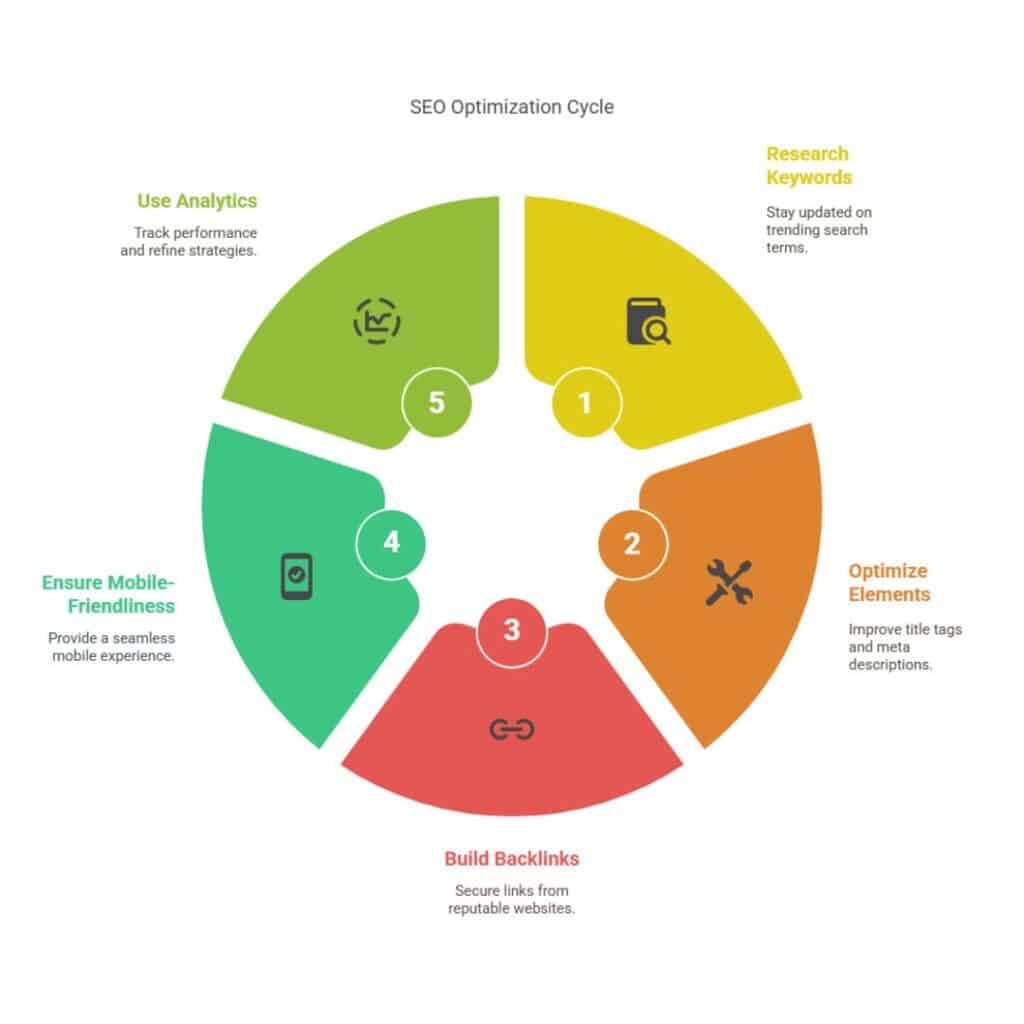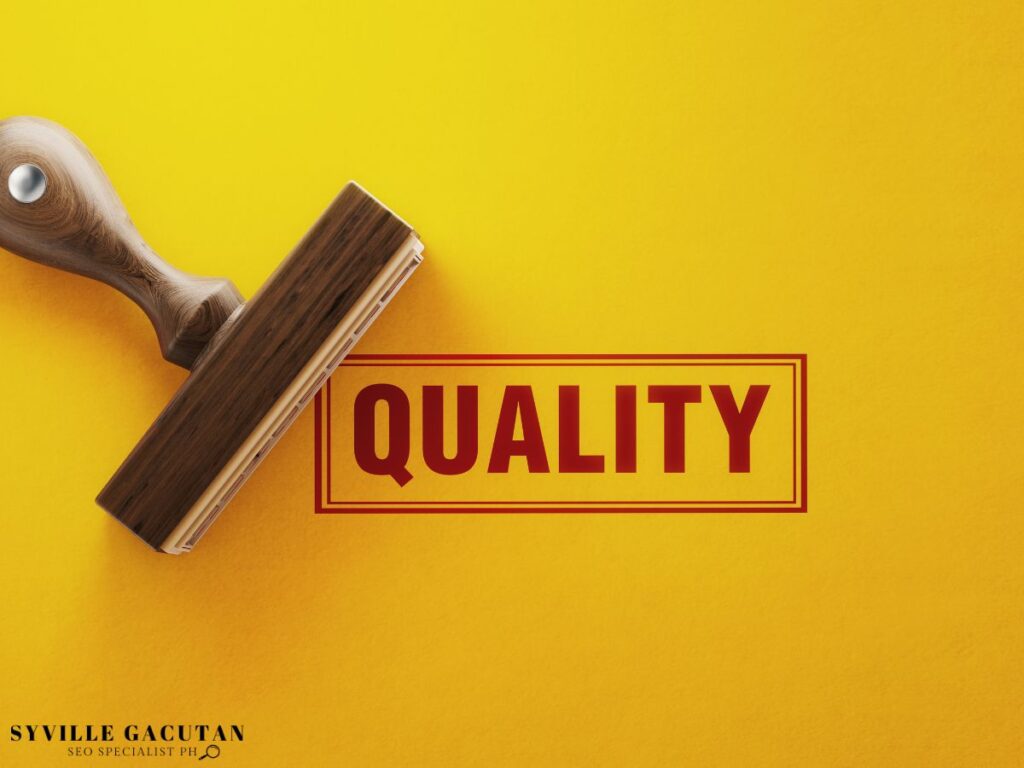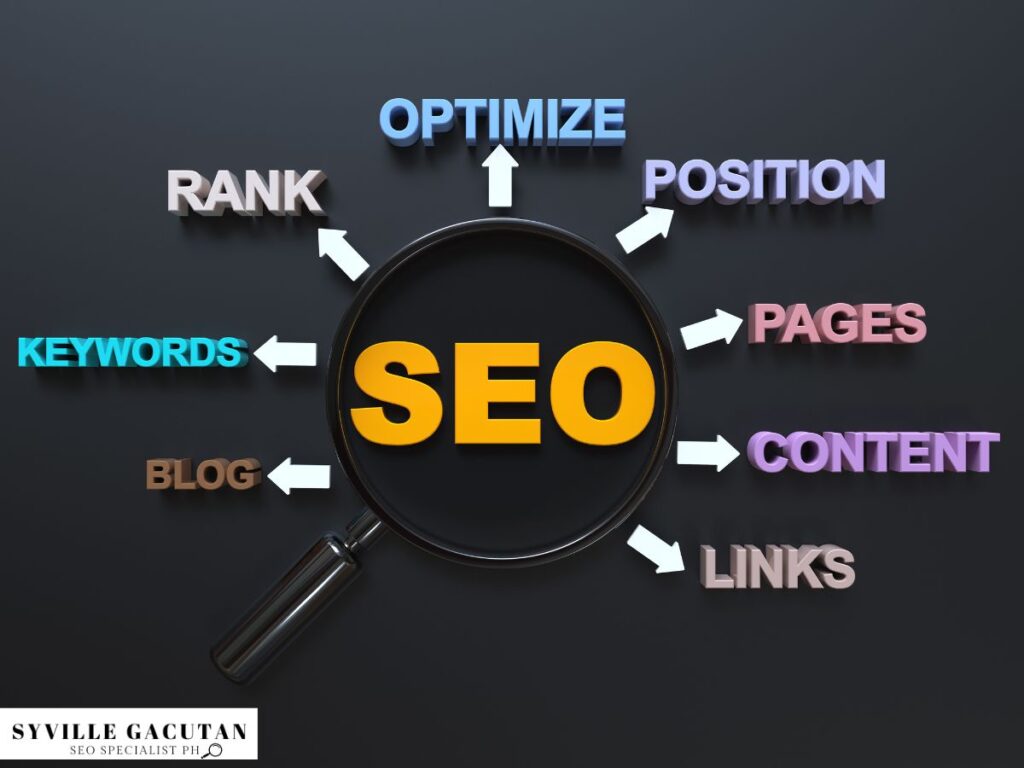
Boost Your Blog’s SEO: A Beginner’s Guide
Improving your blog’s SEO requires a few strategic steps like smart keyword research, on-page optimization, and building strong backlinks. Start by identifying relevant keywords and naturally weaving them into your content without affecting its flow. Refine title tags, meta descriptions, and headers to enhance visibility, while maintaining a user-friendly design. Boost your site’s authority by securing quality backlinks and removing any low-quality ones. To keep users engaged, focus on fast loading times, mobile compatibility, and clear, well-structured content with interactive features. Regularly track your performance to fine-tune your approach and keep your SEO efforts on track for long-term success. There’s plenty more to discover in knowing how to optimize blog posts for SEO!
Key Takeaways
- Regularly research keywords: Stay updated on relevant and trending search terms that your target audience is using to keep your content aligned with their needs.
- Optimize key elements: Improve title tags, meta descriptions, and headers to increase your blog’s visibility on search engines.
- Build quality backlinks: Strengthen your blog’s credibility and ranking by securing links from trusted, reputable websites.
- Ensure mobile-friendliness and fast loading: Ensure your blog runs smoothly on mobile devices and loads quickly to provide a seamless experience for your visitors.
- Use analytics to improve: Track your blog’s performance with analytics tools and refine your SEO strategies based on what the data tells you.

Understanding Blog SEO
Understanding the basics of Blog SEO is crucial for anyone wanting to grow their online presence and attract more organic traffic. Blog SEO is all about strategically combining different elements to make your blog more visible in search engine results, helping more people discover your content.
A key part of Blog SEO is keyword research, where you figure out the words and phrases your potential readers are likely to use when searching for content like yours. Doing this well helps ensure your blog posts are not only relevant but also easier for people to find.
On-page optimization is another key part of Blog SEO. It involves optimizing each page on your blog to help raise ranks and draw in more relevant visitors from search engines. Key steps include using meta tags to aid in the comprehension of your content by search engines and guarantee your content is well-organized and easy for readers to navigate.
Backlink strategies also play a pivotal role in Blog SEO. The acquisition of high-quality backlinks from reputable sites not only enhances the credibility of your blog but also significantly boosts its authority and search engine ranking.
Developing a robust backlink strategy involves reaching out to other content creators and engaging in guest blogging or collaborative projects.
Importance of Blog SEO

Blog SEO holds significant importance in the digital landscape, serving as a crucial element for maximizing a blog’s reach and effectiveness. In a world where content is abundant, ensuring that your blog stands out to both search engines and users is paramount.
Effective SEO strategies allow bloggers to enhance visibility, attract organic traffic, and ultimately, achieve their desired outcomes. By focusing on key aspects such as keyword research, on page optimization, and backlink strategies, bloggers can significantly improve their search engine rankings.
- Keyword Research: Understanding what your target audience is searching for is the foundation of successful blog SEO. By identifying relevant keywords, bloggers can tailor their content to meet user intent. This involves using SEO tools to find high-volume, low-competition keywords that can drive traffic to your blog.
- On Page Optimization: This involves refining elements within your blog to ensure they are search-engine friendly. It includes crafting compelling meta descriptions and optimizing title tags, headers, and images, all aimed at boosting your blog’s visibility in search results.
- Strategies for Backlinks: Establishing a network of high-quality backlinks can greatly enhance your blog’s authority and credibility. Engaging in link-building activities, such as guest posting and collaborating with other bloggers, helps increase your blog’s domain authority and search engine ranking.
Quality and Utility

While keyword research, on-page optimization, and backlink strategies form the backbone of successful blog SEO, the quality and utility of content cannot be overlooked. In an era where search engines prioritize user satisfaction, creating content that resonates with your audience is paramount. High-quality content, rich with insightful information, not only attracts visitors but also keeps them engaged. This engagement signals to search engines that your content is valuable, thereby enhancing its ranking potential.
Quality content integrates seamlessly with on-page optimization techniques. This involves crafting clear, concise, and relevant content that naturally incorporates keywords identified during the keyword research phase. However, overstuffing keywords may hinder readability and user engagement, so balance is essential. Engaging content encourages readers to spend more time on your site, reducing bounce rates and increasing the chances of link building. Other websites are more likely to link to content that offers unique insights or solutions, bolstering your domain authority.
Utility is equally crucial. Content should address the needs and queries of your target audience, providing actionable insights or solutions. This not only improves user engagement but also fosters trust and credibility.
Moreover, in today’s digital landscape, mobile friendliness is vital. With a significant portion of users accessing content via mobile devices, ensuring your blog is mobile-friendly enhances accessibility, leading to improved user experience and longer site visits.
Ultimately, while technical SEO practices like keyword research and on-page optimization lay the groundwork, it is the quality and utility of your content that truly propel your blog to SEO success.
Blog SEO: Website Experience

A significant aspect of successful blog SEO lies in the overall website experience, which encompasses not just the aesthetic appeal but also the functionality and performance of your site.
Optimizing these elements is crucial as they directly affect how visitors interact with your content, ultimately influencing your blog’s search engine rankings.
To enhance your website experience, consider focusing on the following key areas:
- Loading Speed: The faster your site loads, the more likely users are to stay engaged. Slow loading times can frustrate visitors, leading to higher bounce rates and reduced user engagement.
Use tools like Google PageSpeed Insights to analyze your site’s performance and identify areas for improvement.
- Mobile Optimization: With an increasing number of users accessing content via mobile devices, ensuring your blog is mobile-friendly is no longer optional.
Responsive design and accelerated mobile pages (AMP) are essential for providing a seamless experience across all devices.
Prioritize mobile optimization to cater to this growing audience and improve your search engine rankings.
- Navigation Structure and Visual Hierarchy: A well-organized navigation structure allows users to easily find what they’re looking for, enhancing user engagement and satisfaction.
Clear visual hierarchy, including the use of headings, subheadings, and consistent formatting, guides visitors through your content smoothly.
This not only improves user experience but also helps search engines better understand your site’s structure, contributing to improved SEO.
Blog SEO: Content Experience

Having established the importance of enhancing your website’s overall experience, the next step is to focus on the content experience itself. This involves creating content that not only appeals to search engines but also resonates with your audience. A successful content experience begins with thorough keyword research. Understanding what your audience is searching for enables you to tailor your content to meet their needs, ultimately improving visibility and relevance.
Content optimization is another crucial aspect. It involves refining your content to ensure it aligns with best practices for search engines while maintaining quality and authenticity. Incorporate keywords naturally within your content, titles, and meta descriptions to enhance searchability without compromising readability.
User engagement plays a pivotal role in the content experience. Engaging content encourages readers to spend more time on your blog, reducing bounce rates and improving your site’s ranking. Think about adding interactive components like surveys, tests, or comment sections to foster engagement and build a community around your content.
Internal linking is a strategic tool for guiding users through your blog, enhancing navigation, and distributing page authority. By linking to relevant posts within your content, you not only improve the user experience but assist search engines comprehend the hierarchy and structure of your site.
Blog SEO: Ongoing Search Engine Optimization

Sustaining the success of your blog requires a commitment to ongoing search engine optimization (SEO) practices. This commitment ensures that your blog remains competitive and continues to attract and engage audiences. A few critical components form the backbone of ongoing SEO efforts, each demanding continuous attention and refinement.
- Keyword Research: Regularly updating your keyword strategy is essential. Trends change, and so do search behaviors. Use tools to identify new keyword opportunities and refine existing ones to capture the shifting interests of your audience.
- On Page Optimization: This involves consistently refining your blog’s content and structure. Ensure that title tags, meta descriptions, and headers are optimized with the latest keywords. Additionally, maintain a clean and user-friendly interface that enhances the reader’s experience.
- Backlink Strategies: Building a network of quality backlinks remains a vital aspect of SEO. Develop strategies to acquire links from reputable sites to boost your blog’s authority and improve its search ranking. Keep an eye on and update your backlink profile frequently to remove any harmful links.
Technical SEO is another pillar that should not be overlooked. Regularly assess your website’s architecture, ensuring fast load times and mobile optimization to enhance user experience. The last component of the jigsaw is performance tracking. Make use of analytics software to track the effectiveness of your blog.
Final Thoughts
Optimizing your blog for SEO is a continuous process that requires attention to both technical elements and content quality. By focusing on keyword research, on-page optimization, building strong backlinks, and improving user experience through mobile-friendliness and fast loading times, you can significantly enhance your blog’s visibility and engagement. Consistently refining your SEO strategy based on performance metrics will help you adapt to changes in search behavior and maintain long-term success.
Need expert help with your blog’s SEO? Connect with Syville Gacutan, an experienced SEO Specialist in the Philippines. Syville can guide you in creating optimized blog content, improving your search rankings, and maximizing your blog’s reach. Contact today and start boosting your blog’s performance!